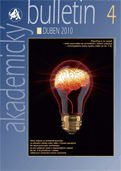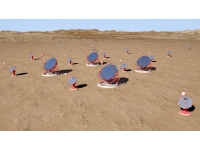During a two-day meeting held on 15 and 16 July 2015, the Cherenkov Telescope Array (CTA) Resource Board, with the participation of Czech representatives, decided to choose two sites for detailed contract negotiations for the location to host the world’s largest gamma-ray telescope network: a location in the Atacama desert in Chile in the southern hemisphere and Roque de los Muchachos Observatory in La Palma, Canary Islands in the northern hemisphere.
CTA is an initiative to build the world’s largest and most sensitive high-energy gamma-ray
observatory. Over 1,000 scientists and engineers from 5 continents, 31 countries and over 170
research institutes participate in bringing the CTA Observatory to life for the astrophysics
community. In line with modern trends, CTA will serve as an open observatory, allowing all
scientists to post proposals for observations and analyze data. It will provide a deep insight
into the non-thermal, high-energy universe. The CTA observatory will detect high-energy radiation
with unprecedented accuracy and approximately 10 times the sensitivity of current instruments,
providing novel insights into some of the most extreme and violent events in the universe.
Splitting the Observatory into two sites in the two hemispheres allows for coverage of the whole
sky. The construction of the Observatory, estimated to cost about 300 million Euro, will commence
in 2016 and finish in 2020.
Both chosen locations are somewhat of a paradise on Earth for astronomers. The southern site
is less than 10 km southeast of ESO’s existing Paranal Observatory in the Atacama Desert, which is
considered one of the driest and most isolated regions on earth – an astronomical paradise. In
addition to the ideal conditions for year-round observation, collaboration with ESO offers CTA the
opportunity to take advantage of existing infrastructure (roads, accommodation, water, electricity,
etc.) and access to established facilities and processes for the construction and operation of the
observatory. The northern site is located on the existing site of the Instituto Astrofisica de
Canarias Observatorio del Roque de los Muchachos on the island of La Palma, the fifth largest
island in the Canary Islands. At 2,200 m altitude and nestled on a plateau below the rim of an
extinct volcanic crater, the site currently hosts the two Major Atmospheric Gamma Imaging Cherenkov
Telescopes (MAGIC) telescopes. This location offers an ideal atmosphere that is mostly free and
clear of pollution and turbulence for year-round observation.
In the Czech Republic, the Institute of Physics of the Czech Academy of Sciences and the
Charles University in Prague are involved in the CTA project; the entry of the Palacky University
in Olomouc is underway. Some 25 researchers from the Czech Republic contributed heavily to the
evaluation of the individual candidate locations; currently they are working on preparations for
precise calibration of the Observatory, in particular regarding the varying atmospheric conditions
during observation. The specialists from the Joint Laboratory of Optics of the Institute of Physics
of the Czech Academy and the Palacky University in Olomouc work on testing and evaluating the
feasibility of production of mirror segments for the future telescopes of the Observatory. The
development of the CTA project in the Czech Republic is vitally supported by the Ministry of
Education, Youth and Sports of the Czech Republic within the programs EUPRO and INGO.
Photo:
Vizualization of the CTA telescope network in a desert landscape (Credit: G. Perez, SMM,
IAC)
22 Jul 2015







